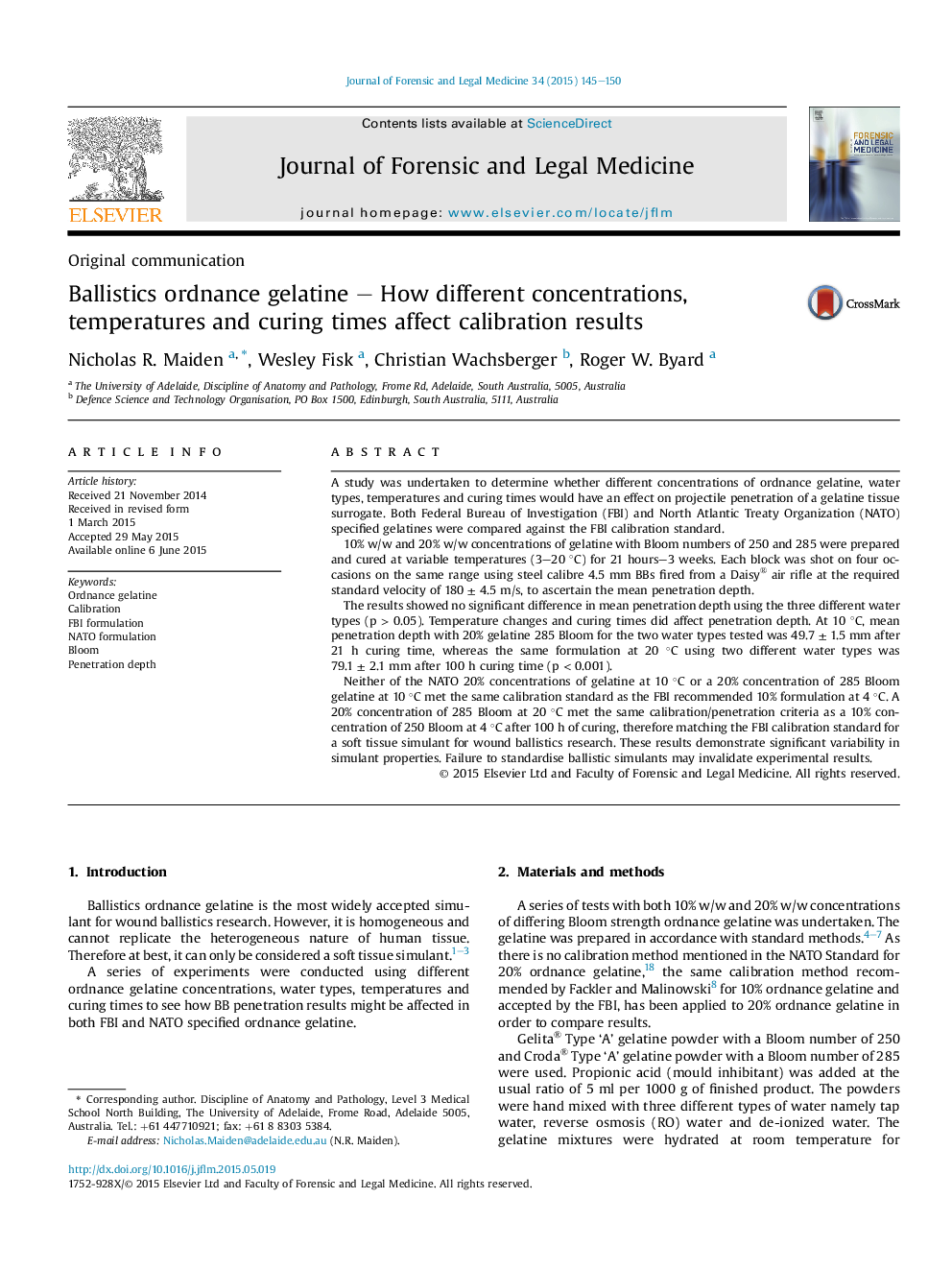| Article ID | Journal | Published Year | Pages | File Type |
|---|---|---|---|---|
| 101869 | Journal of Forensic and Legal Medicine | 2015 | 6 Pages |
•Temperature and curing times directly affect gelatine projectile penetration.•Penetration results are not affected by different water types during manufacture.•20% concentration of 285 Bloom at 20 °C is a suitable soft tissue simulant.•Ordnance gelatine manufacture must be standardized to allow comparison of results.
A study was undertaken to determine whether different concentrations of ordnance gelatine, water types, temperatures and curing times would have an effect on projectile penetration of a gelatine tissue surrogate. Both Federal Bureau of Investigation (FBI) and North Atlantic Treaty Organization (NATO) specified gelatines were compared against the FBI calibration standard.10% w/w and 20% w/w concentrations of gelatine with Bloom numbers of 250 and 285 were prepared and cured at variable temperatures (3–20 °C) for 21 hours–3 weeks. Each block was shot on four occasions on the same range using steel calibre 4.5 mm BBs fired from a Daisy® air rifle at the required standard velocity of 180 ± 4.5 m/s, to ascertain the mean penetration depth.The results showed no significant difference in mean penetration depth using the three different water types (p > 0.05). Temperature changes and curing times did affect penetration depth. At 10 °C, mean penetration depth with 20% gelatine 285 Bloom for the two water types tested was 49.7 ± 1.5 mm after 21 h curing time, whereas the same formulation at 20 °C using two different water types was 79.1 ± 2.1 mm after 100 h curing time (p < 0.001).Neither of the NATO 20% concentrations of gelatine at 10 °C or a 20% concentration of 285 Bloom gelatine at 10 °C met the same calibration standard as the FBI recommended 10% formulation at 4 °C. A 20% concentration of 285 Bloom at 20 °C met the same calibration/penetration criteria as a 10% concentration of 250 Bloom at 4 °C after 100 h of curing, therefore matching the FBI calibration standard for a soft tissue simulant for wound ballistics research. These results demonstrate significant variability in simulant properties. Failure to standardise ballistic simulants may invalidate experimental results.
